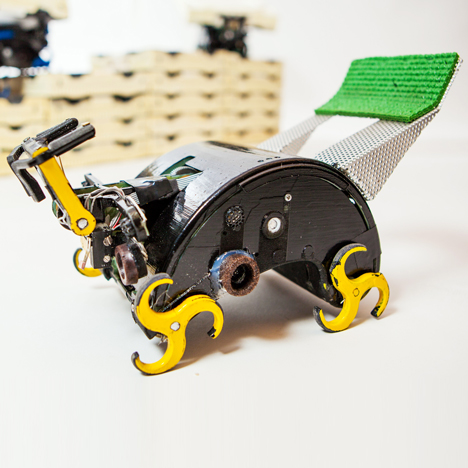News: a team of researchers from Harvard University has developed a team of robots that can build architectural structures based on the behaviour of termites.
Modelled on the way the insects build huge and complex mounds, the little bricklayers individually follow a set of predetermined rules, working without a design plan and without communicating with each other.
Each one has hooked wheels and a front lever to move material, and uses sensors to tell when it's alongside another robot or a brick in order to negotiate the ever-changing environment of a construction site.
"There is a lot of interest in the field of bio-inspired robotics these days, and I think the possibility of inspiration from termite colonies, which provide such a great example of a giant work force of individually simple and expendable agents, but together comprising a fantastically resilient system, is very exciting," said the study's co-author, Kirstin Peterson.
Termites build complex structures without an idea of the overall design by picking up earth and moving it to a location according to a set of rules. If that location is filled, they move on.
Similarly, the robots have no program to tell them what they are building, simply a set of traffic rules telling them which direction to move in. This means that if one of the robots breaks down, they just build around it. They will also never trap themselves inside the building structure.
The Harvard University researchers revealed the results of their research by making the robots build a small castle. Although the work is slow, they say the self-directing robots are ideal for building in dangerous or hostile environments such as earthquake areas, war zones, under the sea or on uninhabited planets.

